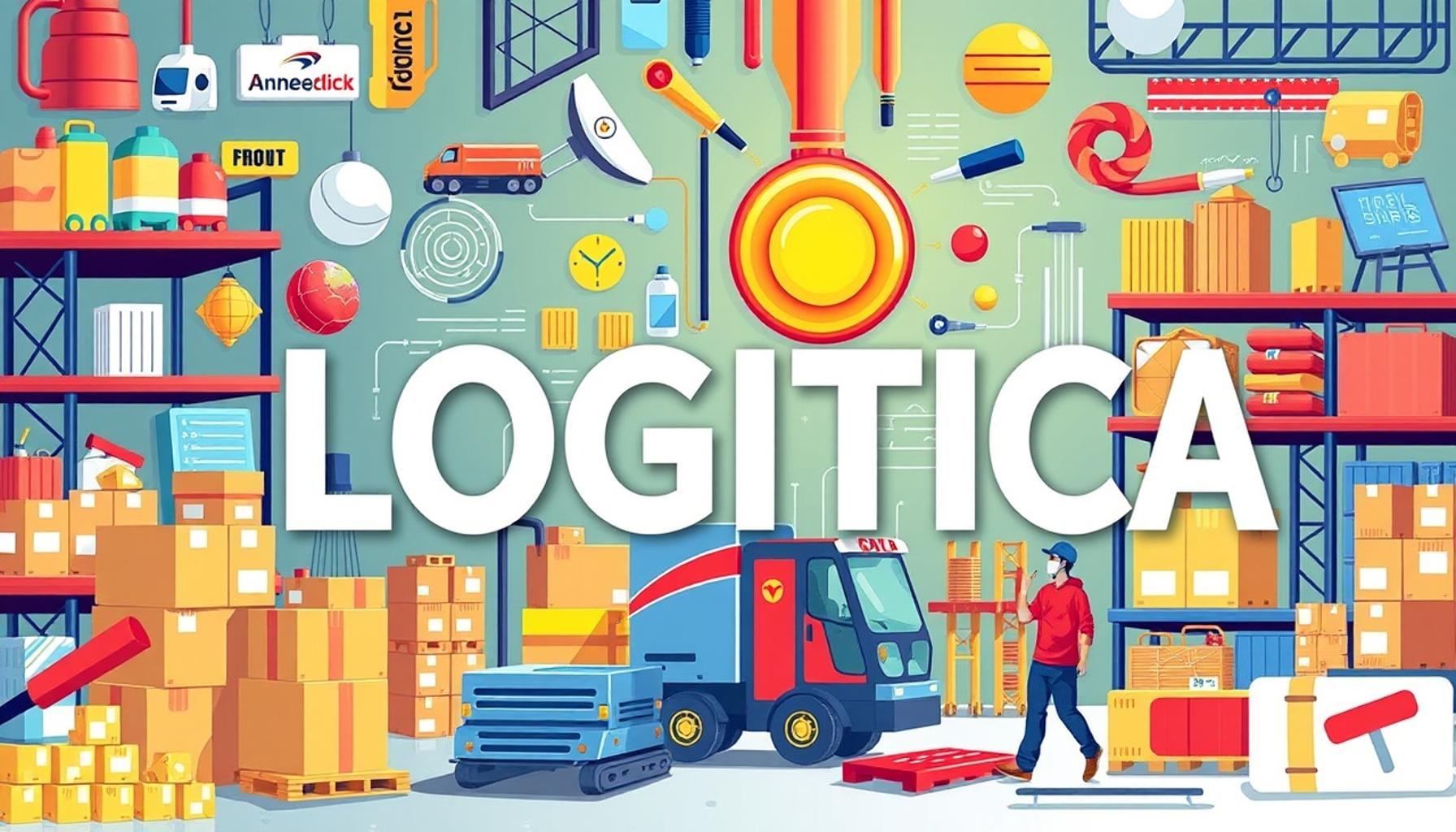Innovation in Logistics: How Shein is Redefining Deliveries in E-commerce

Transforming the Logistics Landscape of E-commerce
The logistics industry is undergoing a significant transformation, driven largely by the explosive growth of e-commerce. Companies like Shein are pioneering this shift by adopting innovative strategies that enhance both customer experience and operational efficiency. As online shopping continues to soar, particularly in the post-pandemic era, companies are compelled to rethink their logistics to remain competitive. With a keen emphasis on speed and reliability, Shein is not just keeping pace; it is redefining the way deliveries function in the ever-changing landscape of online retail.
Key Features of Shein’s Logistics Innovations
Shein’s logistical framework is a comprehensive blend of technology and customer-centric strategies aimed at ensuring that shoppers have a smooth experience from the moment they click ‘purchase’ to delivery at their doorstep. Here are some standout features:
- Real-time tracking: One of Shein’s most valued features is its robust real-time tracking system. Customers are empowered to monitor their orders at every step, enabling them to anticipate delivery times accurately. This transparency builds trust and reduces anxiety, which can often accompany online shopping.
- Global reach: With a meticulously planned network of warehouses strategically located around the world, Shein can efficiently fulfill orders across diverse regions. This global infrastructure is designed not only to minimize shipping times but also to optimize costs, ensuring competitive pricing for their customers.
- Advanced technology: Automation and artificial intelligence are central to Shein’s logistics strategy. By employing sophisticated software for inventory management and employing robotics in warehousing processes, the company significantly reduces human errors and delays. This tech-savvy approach allows Shein to respond swiftly to changing demands and manage their stock effectively.
As e-commerce continues to thrive, the demand for effective logistics solutions keeps escalating. Shein’s strategy does not solely focus on rapid delivery; it also aims to create a seamless shopping experience that keeps customers coming back. For example, consider the rise of same-day delivery services in urban areas, which have increasingly become a noteworthy expectation among consumers. By offering such expedited services, Shein not only stands out but also sets a benchmark for other retailers in the industry.
The innovative logistics framework employed by Shein could very well serve as a model for other retailers aiming to improve their delivery systems. Retailers must adapt to the realities of an evolving market, and drawing inspiration from leaders in logistics can provide a roadmap for success in a highly competitive environment. As companies explore the potential of advanced logistics solutions, the future of e-commerce logistics looks poised for even greater developments.
DISCOVER MORE: Click here to learn about the impact of real-time analysis tools
Pioneering Efficiency and Customer Satisfaction
As e-commerce accelerates at an unprecedented pace, Shein is at the forefront, not just participating in the race but actively redefining its parameters. This fast-fashion giant’s innovative approach to logistics represents a significant leap in the quest for speed and efficiency, encapsulating a model that many in the retail sector are eager to emulate. At the core of Shein’s logistics transformation is a commitment to improving the customer experience, which translates to faster and more reliable deliveries—an essential consideration in today’s digital marketplace.
Tailored Delivery Solutions
Shein’s logistics strategy goes beyond the basics of shipping; it is a well-oiled machine that efficiently meets diverse customer needs. Here are some key components that highlight how Shein is innovating within the logistics realm:
- Localized Warehousing: By leveraging a network of fulfillment centers positioned close to major urban centers, Shein minimizes transit times. This strategy allows items to reach customers within days, if not hours—something that has become increasingly crucial in a world where instant gratification is the norm.
- Data-Driven Decision Making: Utilizing customer data analytics, Shein optimizes its inventory management by predicting demand based on shopping trends, seasonal changes, and even social media activity. This proactive approach ensures that popular items are well-stocked, effectively reducing out-of-stock occurrences.
- Flexible Delivery Options: Understanding that consumer preferences vary, Shein provides multiple delivery choices, including standard shipping, express options, and even pickup points for added convenience. This flexibility ensures that every customer can find a solution that fits their schedule.
Moreover, Shein has established partnerships with leading logistics providers to enhance delivery capabilities. These collaborations improve the overall speed and efficiency of shipment processing, enabling Shein to offer features like next-day delivery in selected areas—an option that is rapidly becoming a consumer expectation in the e-commerce landscape.
The emphasis on continuous improvement and adaptation in logistics reflects Shein’s understanding of market dynamics. By implementing innovative technology solutions such as machine learning for route optimization and mobile applications for seamless order tracking, Shein is enhancing operational efficiency while creating a more engaging shopping experience for customers.
As competitors scramble to keep up, Shein’s forward-thinking logistics model serves as both an inspiration and a benchmark in the industry. Businesses looking to thrive in the competitive world of online retail must recognize that the strength of their logistics operations can often dictate their market presence. The demand for quicker, more reliable delivery solutions is only expected to grow, compelling companies to rethink their strategies in the face of rising customer expectations.
Shein, a leading player in the e-commerce fashion industry, is making significant strides in logistics innovation that is transforming the way deliveries are made. At the heart of its strategy is a sophisticated supply chain that leverages data analytics and artificial intelligence to optimize inventory management and delivery routes. Shein’s ability to quickly understand changing consumer trends allows it to adapt its offerings in real-time, ensuring that customers receive the latest styles without delay.Additionally, Shein has implemented a state-of-the-art warehousing system. By establishing multiple distribution centers closer to key markets, the company can dramatically decrease shipping times. For instance, products that once took weeks to reach customers can now arrive in a matter of days or even hours, enhancing the overall customer experience. This logistics model not only meets the growing demand for fast fashion but also minimizes shipping costs and reduces the carbon footprint associated with transportation.Moreover, the company has embraced automation and robotics within its warehouses, which streamlines operations and boosts efficiency. Automated sorting systems allow for quicker processing of orders, while robotics assist in picking and packing, ensuring accuracy and speed. This level of efficiency is crucial in the highly competitive e-commerce landscape, where customer satisfaction hinges on prompt delivery.To further ensure reliability, Shein has partnered with numerous third-party carriers, allowing for diversified shipping options. This flexibility lets customers choose among various delivery speeds suited to their needs—whether they opt for express services or standard shipping. As a result, Shein successfully caters to a wide range of customer preferences, firmly positioning itself ahead of competitors in logistics innovation.Overall, Shein’s comprehensive approach to logistics not only meets today’s demands for efficiency and speed but also sets a precedent for the future of e-commerce deliveries. The company’s ability to merge cutting-edge technology with creative solutions has proved invaluable in redefining the shopping experience for millions of customers around the globe. This strategy showcases how logistics, when approached innovatively, can significantly enhance an e-commerce platform’s value proposition.
DISCOVER MORE: Click here to learn about Shein’s winning strategies
Leveraging Technology for Enhanced Logistics
In the quest for operational superiority, Shein stands out not only for its speedy delivery mechanisms but also for its integration of advanced technology into its logistics framework. By leveraging cutting-edge innovations, Shein is transforming the traditional logistics model to create a seamless experience for customers and streamline internal processes. This tech-savvy approach is evident in several core areas:
Smart Inventory Management
At the heart of Shein’s logistics innovation lies a seamlessly integrated inventory management system bolstered by real-time data analytics. This system allows the brand to monitor consumer purchasing patterns and stock levels, adjusting supplies nearly instantaneously. A recent study indicated that brands using advanced inventory analytics experience a reduction in excess stock by as much as 30%. Such efficiency not only saves costs associated with warehousing and waste but also ensures that popular items are consistently available to meet customer demand.
Advanced Drone Delivery
Looking toward the future, Shein is also exploring the viability of drone delivery systems to further accelerate shipping times. While still in experimental phases, the potential for drones to deliver packages within urban areas could revolutionize the last-mile delivery sector by cutting down on traffic congestion and drastically reducing delivery times. Early tests in various logistics hubs indicate that drones could deliver packages in under 30 minutes, an attractive proposition for consumers increasingly accustomed to rapid fulfillment.
Sustainable Practices
As part of its commitment to corporate responsibility, Shein is understanding the importance of sustainability in logistics. With e-commerce contributing significantly to global carbon emissions, Shein’s approach includes utilizing eco-friendly packaging and optimizing supply chains to minimize environmental impact. Reports show that optimizing logistics can reduce emissions by as much as 25%. Moreover, Shein is working towards transparency in its supply chain by implementing blockchain technology, which allows customers to track the sustainability of their purchases while ensuring compliance with environmental regulations.
Personalized Shopping Experiences
E-commerce is no longer a one-size-fits-all approach. Shein’s implementation of machine learning algorithms enhances personalized shopping experiences by recommending products based on customer behavior and preferences. This not only increases conversion rates but also fosters brand loyalty, as customers are more likely to engage with a platform that understands and caters to their specific tastes. A report by McKinsey suggests that personalized experiences can lead to a revenue increase of 10-15% for e-commerce platforms, highlighting the financial benefits of customization in logistics.
Real-Time Tracking Systems
Transparency within the delivery process is crucial for customer satisfaction, and Shein’s use of real-time tracking technology provides consumers with clarity at every stage. With robust tracking systems integrated into their platform, customers can monitor their orders from warehouse to doorstep. This level of transparency not only enhances trust but also empowers consumers to make informed decisions about their purchases. An increasing number of shoppers value knowing where their package is at any given time, and Shein’s commitment to keeping its customers informed positions it ahead of its competitors.
In this fast-changing landscape of e-commerce, Shein’s innovative logistics solutions exemplify the potential for technological advancements to redefine industry standards. As the company continues to push boundaries through its agile logistics framework, it stands as a model for others in the retail sector, underscoring the essential role of innovation in developing a resilient and responsive supply chain. This blueprint for success could well dictate the future trajectory of online shopping experiences, aligning them more closely with consumer expectations and environmental responsibility.
DISCOVER MORE: Click here for insights
Conclusion: The Future of E-commerce Logistics with Shein
The relentless evolution of e-commerce has placed immense pressure on companies to innovate and enhance their logistics strategies, and Shein is a compelling example of how such innovation can lead to outstanding results. Through the adoption of advanced technologies like real-time data analytics, drone delivery systems, and machine learning algorithms, Shein is not just keeping pace with consumer expectations—it’s setting new standards. The ability to maintain smart inventory management reduces waste and responds swiftly to customer demand, while initiatives like eco-friendly packaging reflect a growing awareness of sustainability in logistics.
Moreover, as personalization in shopping experiences gains precedence, Shein’s focus on tailoring offerings based on consumer behavior will likely enhance brand loyalty and boost profitability. At the same time, real-time tracking technology empowers customers with transparency, cultivating trust in a sector where delivery speed is paramount.
As we consider the future of logistics in e-commerce, Shein’s approach exemplifies a blueprint that others may well follow. The interplay of technology, efficiency, and sustainability within their logistics framework points to a promising direction not only for Shein but for the entire industry. As organizations strive to reinvent their delivery models, the innovations pioneered by Shein could play a crucial role in shaping the landscape of e-commerce logistics, representing a critical step toward a more responsive and responsible retail environment.

Linda Carter is a digital business trends writer and strategist specializing in emerging technologies and online revenue models. With extensive experience helping entrepreneurs and professionals adapt to the digital economy, she shares actionable insights on our platform about monetization strategies, consumer behavior shifts, and next-wave innovations. Her goal is to empower readers with practical frameworks to future-proof their businesses and capitalize on digital opportunities.





